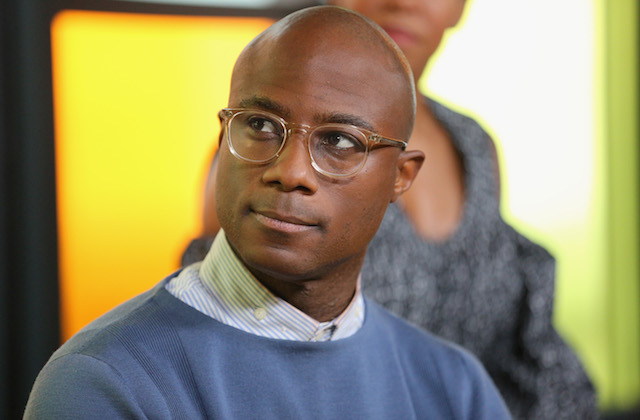Ahead of the November 30 theatrical release of "If Beale Street Could Talk," director and screenwriter Barry Jenkins spoke with novelist Angela Flournoy ("The Turner House") for a profile in The New York Times Magazine. The article, for the publication’s "Culture Issue," debuted online today (October 4).
rnt
I profiled @BarryJenkins for @NYTmag. The incomparable Mickalene Thomas photographed him and Shiona Turini styled him. Edited by @ntabebe. It was all very black. It was all very ideal. https://t.co/SYy8cKcsF4
rnt— Angela Flournoy (@angelaflournoy) October 4, 2018
rntJenkins and several of his colleagues discussed adapting James Baldwin‘s novel for the big screen, Jenkins’ own trajectory and other aspects of his personal and creative lives with Flournoy. Read the following key excerpts before visiting NYTimes.com for the full profile:
On receiving posthumous "Beale Street" directions from Baldwin himself:
rnt
Before the start of production on “If Beale Street Could Talk,” Jenkins received an unexpected package from Gloria Karefa-Smart, James Baldwin’s sister and the executor of his estate. It contained a brown leatherbound notebook dated 1978. In it were Baldwin’s ideas about how to approach a film adaptation of the novel, some of which suggest that Jenkins made choices the writer would have endorsed—using the words of the novel’s young narrator as voice-over, excluding a certain church scene. “This is the cast he wanted,” Jenkins pointed out, showing me the book in his apartment. There’s Ruby Dee, a mysteriously initialed “D.B.,” the singer and actress Rosalind Cash. Baldwin’s list of dream directors include the photographer and filmmaker Gordon Parks, the French New Wave director François Truffaut and Lloyd Richards, who staged the original production of Lorraine Hansberry’s “A Raisin in the Sun.” “And then I ended up directing the damn thing,” Jenkins said. Baldwin’s handwriting covers the first two pages of the notebook, but the rest is blank, as if the writer started jotting down ideas before being called away to other work.
On the differences between "Beale Street" and Jenkins’ previous feature-length projects, "Moonlight" and "Medicine for Melancholy":
rnt
According to Jenkins, this would be the first of his feature films to directly grapple with political themes, but I begged to differ, bringing up the role that gentrification played in his first feature, the 2008 morning-after romance “Medicine for Melancholy”—it’s set in San Francisco, and the two leads even stumble onto a round-table discussion of rising housing prices. In “Moonlight” the ravages of the war on drugs and the brutality of poverty are not at all apolitical. True, Jenkins said, but with that film, “the whole movie is created to almost force the audience to confront what this character is feeling. And so it’s really easy to sit outside the film and just want to hug the film, to hug the main character. But this is Baldwin. In Baldwin, everyone’s implicated, including himself. So I think there’s not a passive path through this film.” It didn’t appear to bother Jenkins that this might make it harder for some “Moonlight” devotees to stay along for the ride to “Beale Street.” There were still plenty of reasons to want to hug this film too.
On capturing characters’ vulnerability with little dialogue:
rnt
Jenkins enjoys moments when his actors make direct eye contact with the camera. He and [cinematographer James] Laxton are in agreement on the power of this sustained looking, how holding the camera on an actor can bring out a host of emotions in the viewer. “If you’re in a dark theater with 300 people sitting next to you,” Laxton said, “and you have someone looking at you from a big screen, I think it does something to you as an audience member.” Alfred Hitchcock employed these sorts of shots, as did Jonathan Demme (who can forget Hannibal Lecter’s stare?), but unlike those filmmakers, Jenkins and Laxton rarely shoot theirs during moments of great emotional agitation. Instead they catch their characters at ease, quiet. “Barry captures silence in a way that we don’t see much, and we especially don’t see that much in the African-American film experience,” Mahershala Ali, who won a best-supporting-actor Oscar for playing the drug-dealer-cum-father-figure in “Moonlight,” told me. “You usually don’t see Black people holding peace and occupying silence, having to fill those voids in that way.”
rn
